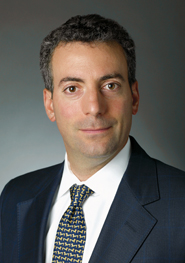It’s time. After a yearlong build-out of its electronic trading desk and offerings, JPMorgan is ready to go head-to-head with the industry’s trading elite with what it says is a new and improved suite of trading products.

Frank Troise, director and global head of electronic trading, joined JPMorgan from Barclays Capital last April. He inherited an established electronic trading desk with a full palette of algorithms, smart order-router technology and post-trade analytics. Still, the brokerage firm needed to distinguish itself from the crowd to raise its profile. Troise went to work.
Since then, he’s been adding staff across the board, as well as tweaking code and modifying routing logic to make JPMorgan more competitive. And finally, after 10 months, Troise believes the pieces are in place and the firm is ready to make a major push.
"In 2010 we set the vision, added more expertise to the team and enhanced the products. 2011 is about getting the JPMorgan name out there as a high-end provider of electronic trading solutions while continuing to invest heavily in next-generation products," Troise said.
For example, he said, the desk already had several algorithms, but clients wanted the firm’s product offerings tailored to their individual needs, such as offering multi-asset trading strategies. They also made a plea for JPM to not give its algorithms names that distracted them from the strategies each algo represented: "Call a VWAP algo a VWAP algo, and don’t confuse us," they essentially said in chorus.
According to a recent Tabb Group report, JPMorgan has its work cut out for it. The report, "U.S. Equity Trading 2010/2011," ranked JPM No. 13 among top algorithmic providers. The report went on to say that JPMorgan’s algorithms had an 11 percent usage rate among head traders in 2010. In 2009, that share was at 16 percent. By comparison, Credit Suisse was ranked No. 1 in 2010, with 69 percent of head traders using its algorithms.
Troise conceded it’s difficult for brokers to differentiate their algorithms from one another, but he said that the JPMorgan electronic trading group is up to the challenge. Customization is the reason for his optimism. His programmers are focusing on speeding up the customization process of the algo, which includes initial tuning, getting feedback on performance and then retuning the tool again for even better execution.
By ramping up electronic trading with a bigger staff and improved products, the bank could make some noise in the industry. Despite its ranking on algos in the Tabb report, JPM was still ranked No. 3 by the buyside as it relates to commission dollars spent in 2010. On that front, Tabb ranked JPMorgan behind Bank of America Merrill Lynch and Credit Suisse.
JPM’s electronic trading group has doubled its size since April. "We’ve done a lot of hiring across the globe and across product, service, sales and quant analytics," Troise said. "We’re investing in the electronic desk aggressively-whether it be on the technology and infrastructure end or client-facing electronic trading personnel."
Troise is no stranger to the business. He was previously the head of equities electronic trading product at Barclays, where his duties included oversight of global product management for the electronic trading of equities and listed options. Prior to that, he worked at Lehman Brothers from 2005 to 2008 and at Investment Technology Group from 1997 to 2005.
He declined to offer the specific number of new hires at JPMorgan, but said in general terms that the electronic trading group has not only grown twofold, but has expanded the subject-matter expertise of its IT development squad and core technology team. The U.S. client-facing team has also doubled, while the U.S. products team tripled in size during the build-out.
New hires hail from various backgrounds, ranging from the high-frequency strata to equities sales traders. Many of the new hires-quants, programmers-have a thorough knowledge of high-frequency trading strategies. With their deep understanding of low-latency trading, they can give clients an edge in the marketplace.
And knowledge of HFT cannot be underestimated today, as it is said to represent between 50 and 60 percent of total trading market volume.
(c) 2011 Traders Magazine and SourceMedia, Inc. All Rights Reserved.
http://www.tradersmagazine.com http://www.sourcemedia.com/




